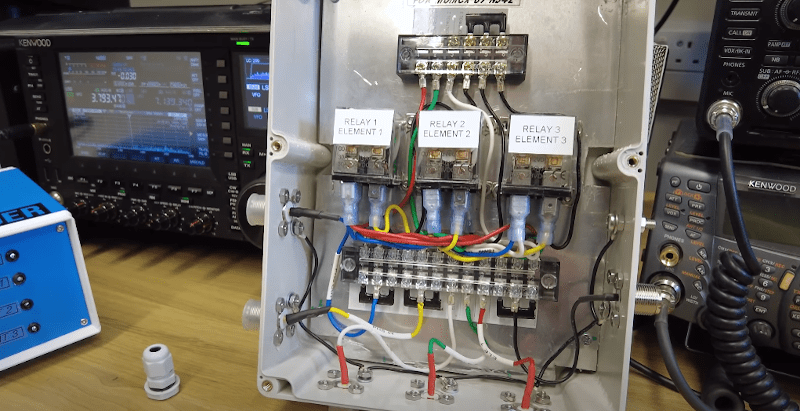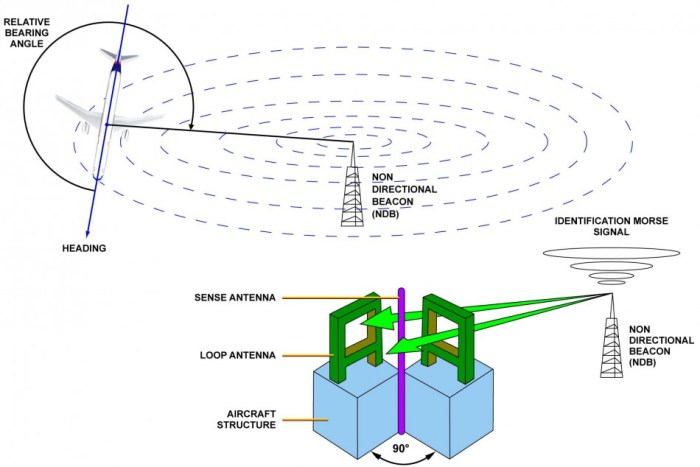After an automatic direction finding antenna has been installed the – After an automatic direction finding antenna has been installed, a world of possibilities opens up. These antennas play a crucial role in various applications, from navigation and surveillance to communication. This guide delves into the intricacies of automatic direction finding antennas, exploring their installation procedures, signal reception and processing techniques, and diverse use cases.
With meticulous attention to detail and authoritative insights, this guide unravels the complexities of automatic direction finding antennas, providing a comprehensive understanding of their functionality and applications.
Automatic Direction Finding Antennas

Automatic direction finding (ADF) antennas are critical components in various navigation, surveillance, and communication systems. These antennas enable the determination of the direction of arrival (DOA) of radio signals, providing valuable information for target tracking, signal analysis, and navigation.The installation, signal reception, processing, and maintenance of ADF antennas are crucial aspects that determine their performance and accuracy.
This article delves into the essential aspects of ADF antennas, including their installation procedures, signal reception and processing principles, direction finding techniques, applications, and maintenance practices.
1. Antenna Installation Procedures, After an automatic direction finding antenna has been installed the
The proper installation of an ADF antenna is essential for optimal performance. The following steps Artikel the general procedures involved:
-
-*Site Selection
Choose a location with minimal obstructions and interference from other antennas or structures.
-*Antenna Mounting
Mount the antenna securely on a suitable mast or tower, ensuring proper alignment and height.
-*Grounding
Connect the antenna to a good ground plane to provide a low-impedance path for unwanted signals.
-*Calibration
Perform calibration procedures to ensure accurate direction finding capabilities.
2. Signal Reception and Processing
ADF antennas detect and amplify radio signals within their operating frequency range. The received signals are then processed to determine their DOA.
-
-*Signal Detection
The antenna’s receiving element captures radio waves and converts them into electrical signals.
-*Amplification
The received signals are amplified to enhance their strength for further processing.
-*Filtering
Filters are employed to remove unwanted noise and interference from the received signals.
3. Direction Finding Techniques
ADF antennas utilize various direction finding techniques to estimate the DOA of radio signals:
-
-*Loop Antennas
These antennas consist of a loop-shaped element that produces a null in the direction of the incoming signal.
-*Phased Arrays
Phased arrays use multiple antenna elements with controlled phase shifts to steer the main beam towards the signal source.
-*Interferometry
This technique utilizes the phase difference between signals received at multiple antenna elements to determine the DOA.
4. Applications and Use Cases
ADF antennas find applications in numerous fields, including:
-
-*Navigation
ADF systems are used in aircraft and marine navigation to determine the direction to a known radio beacon.
-*Surveillance
ADF antennas are employed in radar systems to detect and track targets based on their radio emissions.
-*Communication
ADF antennas assist in establishing and maintaining communication links by determining the direction to the transmitting station.
5. Maintenance and Troubleshooting
Regular maintenance and troubleshooting are crucial for ensuring the optimal performance of ADF antennas:
-
-*Inspection
Periodic inspections should be conducted to check for physical damage or corrosion.
-*Cleaning
Cleaning the antenna and its components can remove dirt and debris that may affect performance.
-*Calibration
Calibration should be performed regularly to maintain accuracy and compensate for environmental changes.
-*Troubleshooting
Common issues include signal reception problems, interference, and calibration errors. Troubleshooting procedures should be followed to identify and resolve these issues.
Clarifying Questions: After An Automatic Direction Finding Antenna Has Been Installed The
What are the key considerations during automatic direction finding antenna installation?
Proper site selection, antenna mounting, and grounding are crucial for optimal performance.
How do automatic direction finding antennas process signals?
They amplify and filter radio signals, employing techniques like phase comparison and null steering for direction estimation.
What are the limitations of automatic direction finding techniques?
Accuracy can be affected by factors such as multipath propagation and signal interference.


